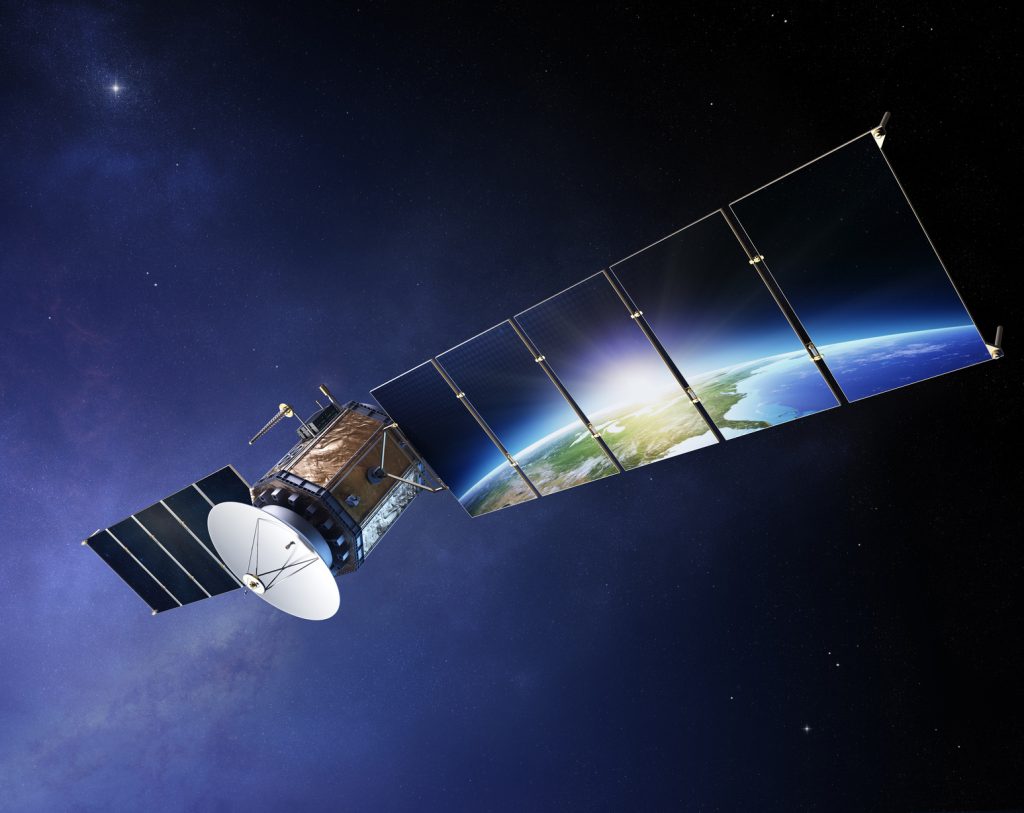
People and nations’ interactions have altered dramatically as a result of technological advancements in the last century. With the introduction of computers and satellites, political and geographical barriers have become less critical in the communication process. As a result, many kinds of communication can operate without legal stumbling blocks. Remote sensing satellite is one of such technologies that is causing much worldwide discussion in the realm of information. The rise of “eyes in the sky” has generated concerns about the ownership rights to the data they collect. The significant legal problems surrounding the usage of such technologies are discussed in this article. Security of nations, military usage and accountability for data, fair access and distribution of data, and intellectual property rights in remote sensing technologies are all issues that need to be addressed.
In 1986, the United Nations passed a resolution on Earth Remote Sensing Principles from Space. These principles discussed the policy of “open skies,” in which a detected country’s prior agreement is not necessary for imaging from space. The resolution stipulates that these actions must not be carried out in a way that jeopardizes the legitimate rights and interests of other states. The goal was to perform sensing operations in order to promote international collaboration while also taking into account the needs of underdeveloped nations. Because the concepts are not legally binding, they are referred to as “soft law.” Several international agreements between sensor nations or data producers and recipients have been based on these concepts.
The commercialization of space operations is unquestionably a beneficial development since it has enabled many countries to benefit from space technology, such as satellite communications, remote sensing, and other uses, for national, economic, and social development. It has raised the possibility of sophisticated space technology being utilized for hostile or violent military reasons. Commercialization of space services might result in high costs, limiting developing nations’ access to their advantages. It poses a greater challenge to the international community, including space-capable countries, to make necessary efforts to make space services affordable to all interested countries. The problems of the usage of such sensing technologies in the contemporary day are discussed in this article.
Equal Access Principle
The equal access principle states that data should be available to the sensed state at a fair cost and without discrimination. The sensing state is unable to discriminate against the sensed state in terms of data supply based on social, economic, or technical standing. Sensed states have access to raw and processed data, as well as data that has been analyzed.
National security considerations and a remote sensing state’s foreign policy might potentially obstruct the application of the ‘equal access principle.’ The sensed states will not have access to the secrets of the distant sensing states due to unilateral legislative limitations placed by certain remote sensing states on collecting and disseminating remotely sensed data. However, their military bases, fortifications, and natural resources are all visible to the public.
In the case of an American firm launching a satellite, the Land Remote Sensing Policy Regulations allow the US government the authority to exert control over the functioning of a foreign remote sensing satellite and to limit the gathering and dissemination of its data.
Data Dissemination
There are four main points of view on data dissemination. The first viewpoint raises the question of whether remote sensing done without the agreement of the perceived state is lawful and desirable. The second point of view acknowledges that it is lawful, but it wants to confine use to instances in which the detected state has been given advance notice or has granted an agreement to the distant sensing operations. The third point of view recognizes the legitimacy and need of sensing technologies in general but aims to prevent other parties from getting data on the senses state’s resources. The fourth viewpoint, known as the “open sky” concept, allows for the non-discriminatory transmission of remotely sensed data to all interested parties, including states, people, and organizations.
Since the endorsement of the ‘open skies policy’ in 1986, several new developments have occurred, including the war on terror, increased national security concerns of developing countries as a result of new remote sensing technology, commercialization, globalization, and a global movement for human rights protection. As a result, it is desired that these advances, as well as the drawbacks of openly disseminating remote sensing data, be taken into account when deciding on an open dissemination strategy.
Assumed Responsibility for Data
Any nation, international organization, or non-governmental entity can conduct remote sensing activities. Non-governmental entities may also include privately held businesses. The involved state or states have a legal obligation to control these activities. Nations that operate sensing satellites or technology must account for their sensing operations. Such operations must be carried out in line with remote sensing principles and international law.
The international responsibility for remote sensing activities, as well as the obligation to ensure their compliance with the aforementioned principle, apply regardless of whether the activities are carried out by the government, non-governmental organizations, or through international organizations to which such states are parties. In the event of loss or damage caused by remote sensing from space, the affected parties’ compensation rights are controlled by Article VI of the Outer Space Treaty and the 1972 Liability Convention for Damage. The Remote Sensing Principles of 1986 expound on this.
Remote Sensing and National Security

Since the inception of sensing technology, remote sensing activities and applications have been viewed as a potential danger to a state’s national security and sovereignty. Third-world nations complain that certain states’ remote sensing collection of data on their territory without agreement infringes on their sovereignty. They believe that resource sovereignty extends to information about those resources as well. These countries think that data collected over their borders should be viewed first by them before being shared with other countries. They dispute the detecting nation’s authority to gather data on other countries.
The kind and location of data, as well as the location from which the data is obtained, determine the validity of information under general law. Outer space is a shared region available to all nations and states for peaceful purposes and exploration. Since no nation has restrictions on space authorities utilizing remote sensing operations, the question of prior consent is ruled out. The unrestricted use of remote sensing technology presents a danger to least developed countries’ national security and sovereignty. For years, customary international law has granted governments the ability to conduct remote sensing activities and collect photographs of other countries.
There is a need for a shift in attitudes and the application of customary international law. Commercialization of remotely sensed data raises the stakes; countries risk being attacked by their own citizens or by other countries. The misuse of remotely sensed data by the wrong individuals would jeopardize national security.
Military using the Remote Sensing Technology
Remote Sensing Imaging is now employed for both civilian and military applications. The question is whether using remote sensing satellites for military purposes is legal. Any effort to answer this question would be contingent on the activity’s compliance with international law, particularly the United Nations Charter and the Outer Space Treaty. The interpretation of the term ‘peaceful intentions,’ which appears in article IV of the Outer Space Treaty, is crucial to the solution to this question. As is generally known, the extent of this provision is ambiguous, and academics are split on how it should be defined. For the purposes of this clause, two questions must be considered: whether parts of outer space should be included by the ‘peaceful purposes’ criterion and what is meant by peaceful purposes.
The provisions, according to one school of thinking, empower nations to utilize certain portions of space for military reasons. The second idea, on the other hand, claims that all of outer space should be utilized for peaceful reasons. The United States and certain Western nations have generally believed that the phrase “peaceful purpose” refers to “non-aggressive” rather than “non-military” objectives. Third-world nations disagree, claiming that the phrase “peaceful” is a synonym for “non-military” and that any use of satellites for military purposes is thus non-peaceful and hence in violation of the Outer Space Treaty.
Conclusion
Remote sensing technology has advanced at such a rapid rate that it has overtaken present international legal frameworks, posing a slew of disturbing questions about its application. Treaties on remote sensing should be created and decided with the help of the United Nations in order to solve these concerns. The proposed treaty would provide an international legal framework for remote sensing laws and regulations. The pact should be written in such a way that non-discriminatory and lawful access to satellite imagery is protected for all types of peacekeeping, commercial, and civic reasons. Remote sensing satellites that do not operate in line with international law should be prohibited from being used. It is particularly critical that the treaty handle reconnaissance satellite operations, clarify the rights and responsibilities of sensing and sensed nations, and address intellectual property rights concerns that may emerge in the sharing of remote sensing advantages.
Editor’s Note
The author of this article talks about remote sensing policies concerning data protection. It talks about the equal access principle along with data dissemination. The author also talks about the security and sovereignty of the nation and military use. Finally, the author concludes that Treaties on remote sensing should be created and decided with the help of the United Nations in order to solve these concerns